
Story by Andrew Farris, Founder and CEO of the On This Spot app. This is part of a six-part series in which he’ll share some of the photos and history you can find on the app with Daily Hive readers.
See also
- Vancouver Then and Now: Skyline (PHOTOS)
- Vancouver Then and Now: Gastown (PHOTOS)
- Vancouver Then and Now: Japantown (PHOTOS)
- Vancouver Then and Now: Granville Street (PHOTOS)
Since Vancouver’s first days, Chinese people have been here, forming an integral part of our society. Today, we cherish this part of the city’s vibrant identity and find it difficult to conceive of a Vancouver without its Chinese influence, yet this was not always so. Chinatown exists today because of the struggles of thousands of immigrants who strove to make decent lives for themselves in an unwelcoming land.
The first Chinese immigrants arrived in the 1850s and came to work in the mines, canneries, sawmills and, later on, in building the railway. They were paid less than white workers, subjected to onerous head taxes that prevented the mostly male workers from bringing their families to Canada, and denied the right to vote. Casual racism was everywhere. In 1907, a mob of white Vancouverites was whipped into an anti-‘Oriental’ frenzy and rampaged through Chinatown, smashing windows and looting stores.
Despite these awful conditions, the Chinese community managed to create a flourishing cultural enclave focused on Shanghai and Canton Alleys near the intersection of Pender and Carrall. When Canada and China allied in World War II to fight Japan, the racist attitudes of many white British Columbians began to soften. After that brutal war, many of the racist laws were struck down and the Chinese community began to grow and thrive. The focus of the Chinese community has since moved south to Richmond, but Chinatown itself has been preserved as a national historic site for future generations. Today 20% of Vancouverites are ethnic Chinese, making it one of the world’s most Chinese cities outside of Asia.
Funeral procession in 1889
1889: Men don traditional dress for a funeral procession in the middle of Chinatown. You can see on the left and in the background a few well-heeled European-Canadians have come to watch from their carriages. Notice how the buildings at left, the tall one and part of the shorter one, survive to today.

1889: Men don traditional dress for a funeral procession in the middle of Chinatown. (Vancouver Archives)
On this spot now…
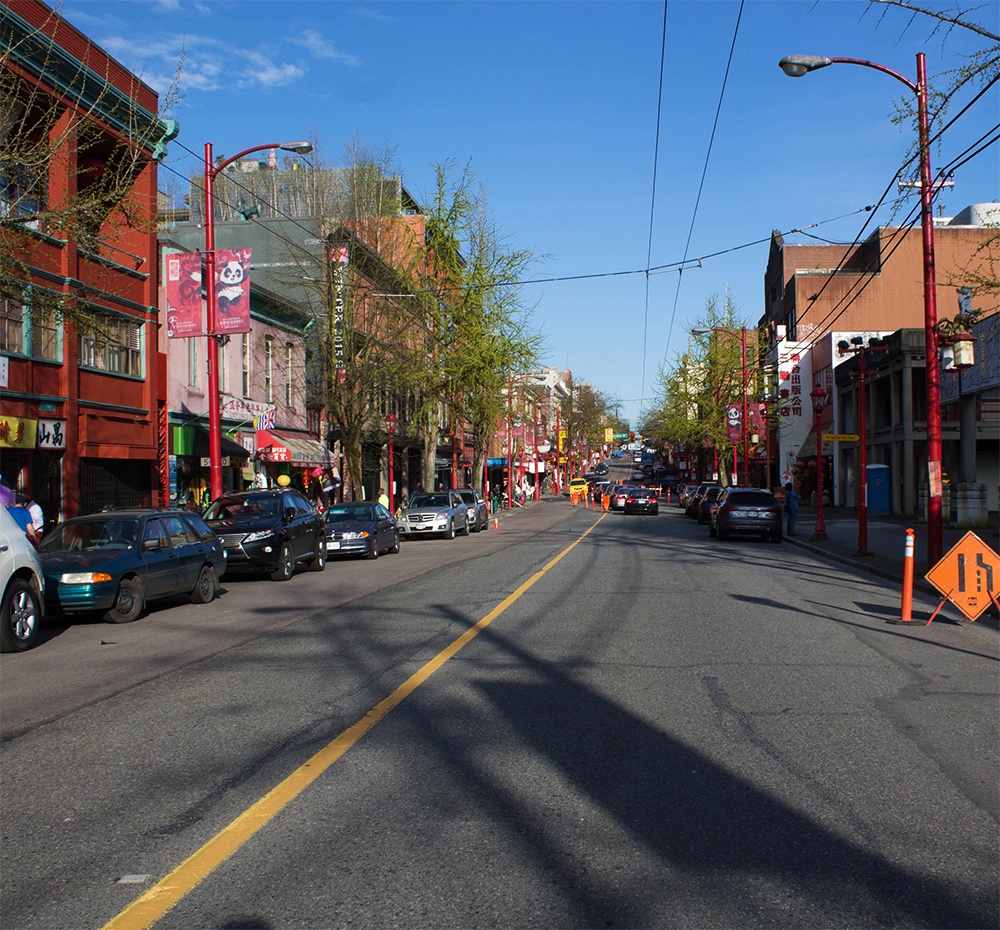
(On This Spot)
Racial tensions in 1907
1907: The south side of Pender and Carrall in the middle of Chinatown. The same year this photo was taken an anti-Chinese riot rocked Vancouver, leading to the destruction of Chinese property and darkening relations between Vancouver’s white and Chinese populations for years to come.

1907: The south side of Pender and Carrall in the middle of Chinatown. (Vancouver Archives)
On this spot now…

(On This Spot)
Chinese Freemasons Building in 1910
1910: People congregate on the street near the Chinese Freemasons Building at left. You can still see the words “Pekin Chop Suey House” on the side today.
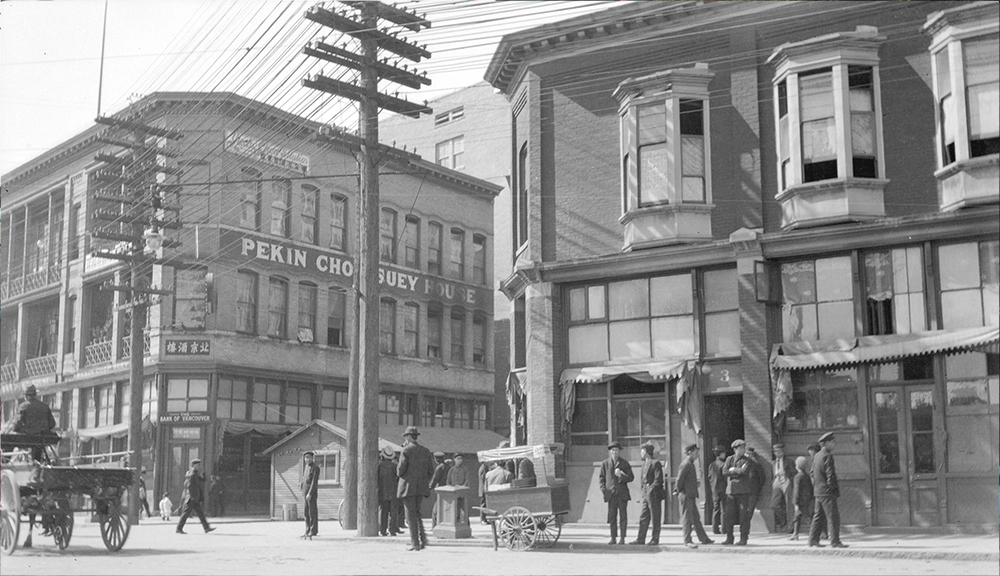
1910: People congregate on the street near the Chinese Freemasons Building at left. (Vancouver Archives)
On this spot now…
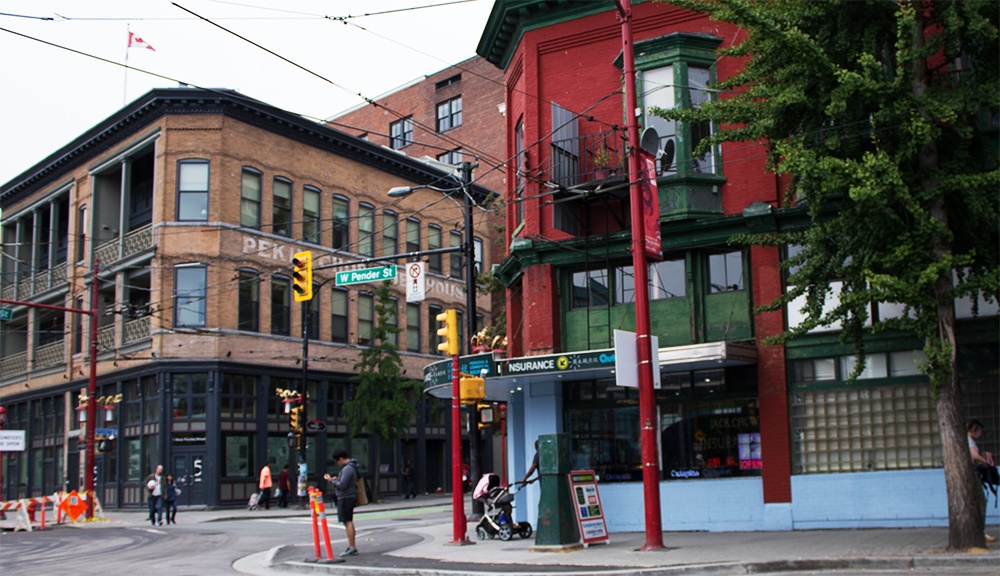
(On This Spot)
Troops march in 1915
1915: Troops from the 29th Vancouver Battalion march east down Pender, led by officers on horseback and watched curiously by several Chinese-Canadians.

1915: Troops from the 29th Vancouver Battalion march east down Pender. (Vancouver Archives)
On this spot now…

(On This Spot)
Carrall Street in the 1910s
1910s: Some of the commercial buildings we see here have the distinctive characteristic of Chinese buildings in Vancouver that you will rarely see elsewhere in the city: recessed upper-floor balconies.

1910s: Distinctive commercial buildings in Chinatown. (Vancouver Archives)
On this spot now…

(On This Spot)
Schoolboys in 1920
1920: A class of Chinese boys is posing for a photo. Everyone looks dressed up for picture day and the three on the left look particularly proud in their scout uniforms.
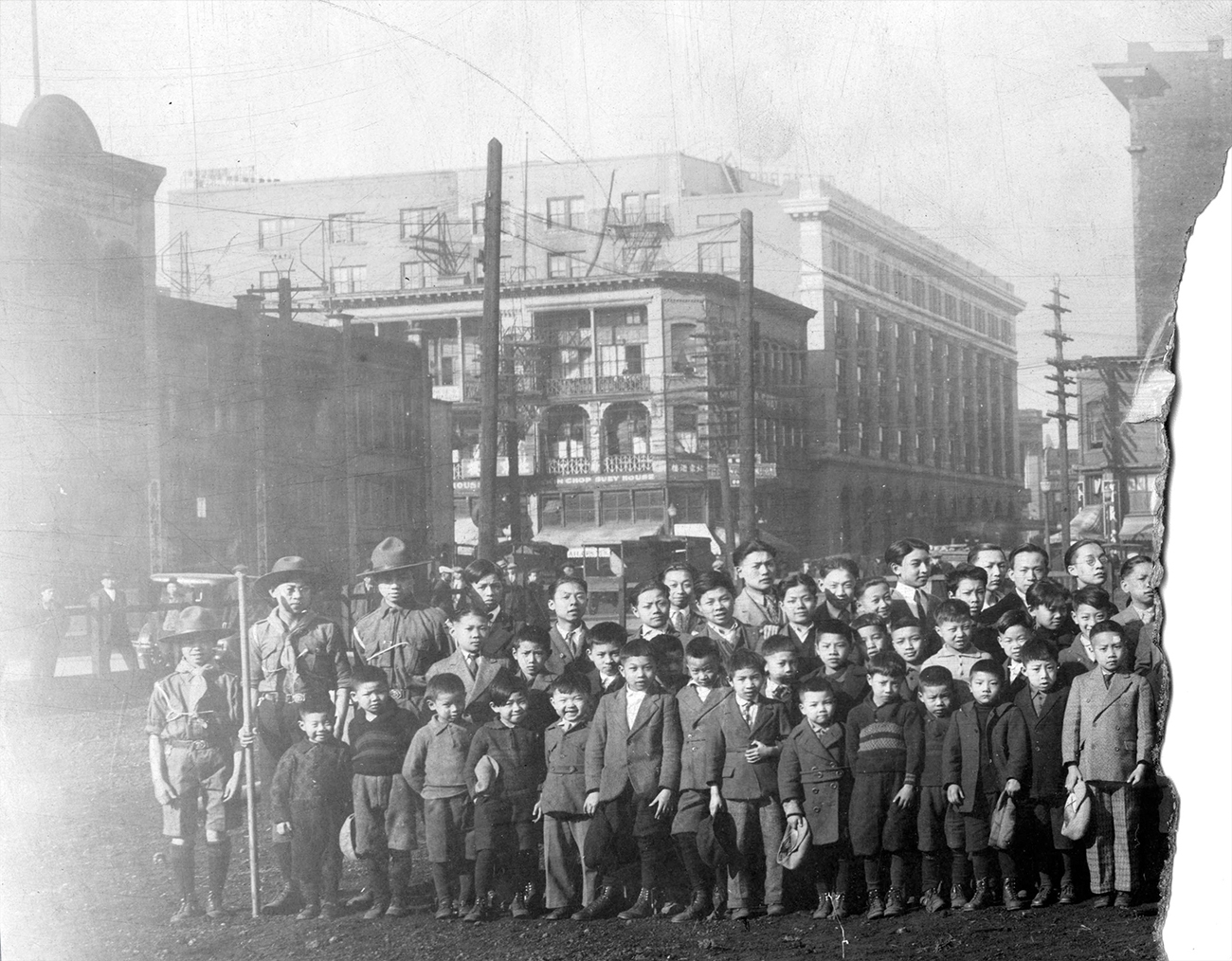
1920: A class of Chinese boys is posing for a photo. (Vancouver Archives)
On this spot now…
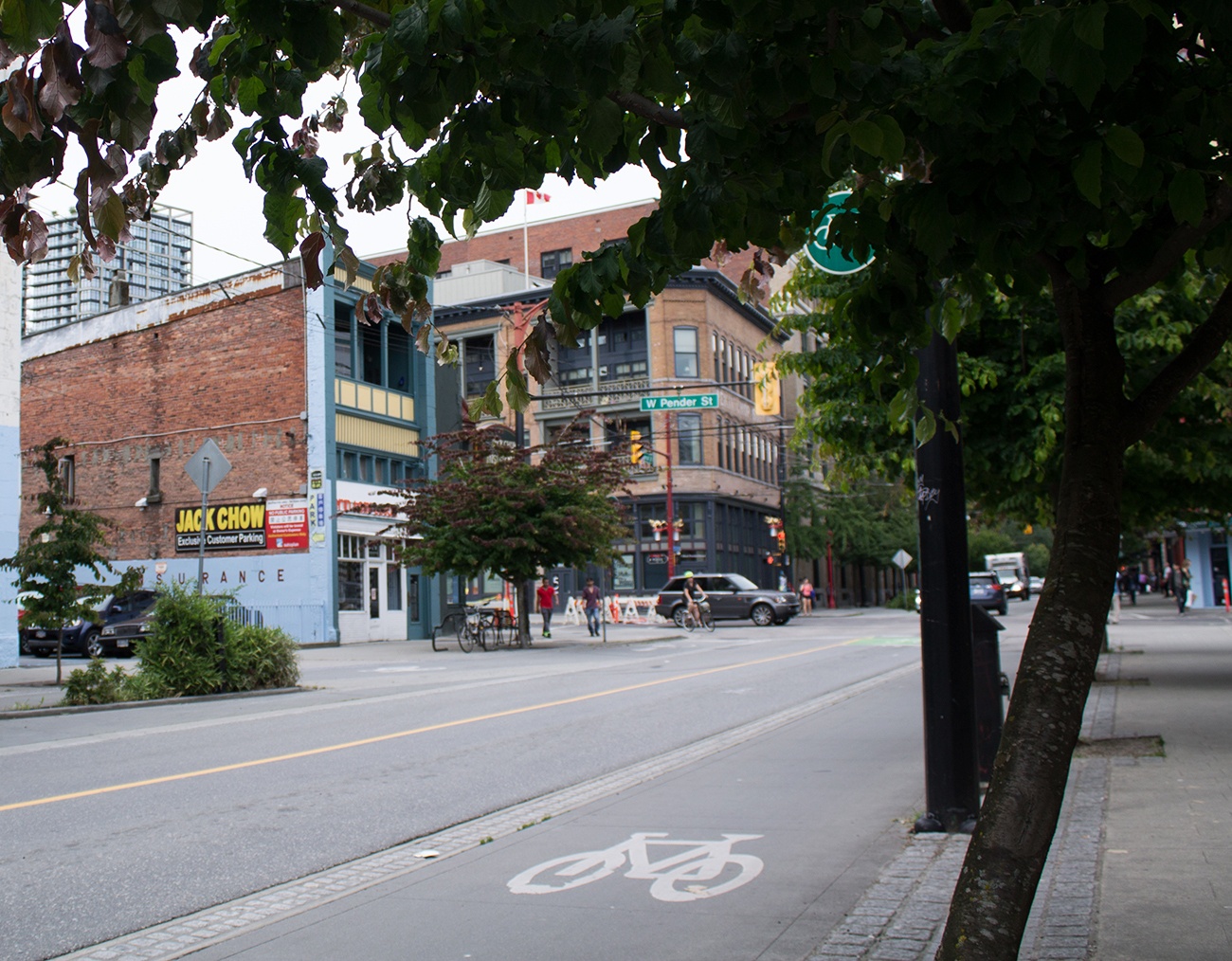
(On This Spot)
Yip Sang’s funeral in 1927
1927: A marching band takes part in the funeral parade of prominent Chinese-Canadian businessman Yip Sang. The Sun Tower’s silhouette is unmistakeable in the background.
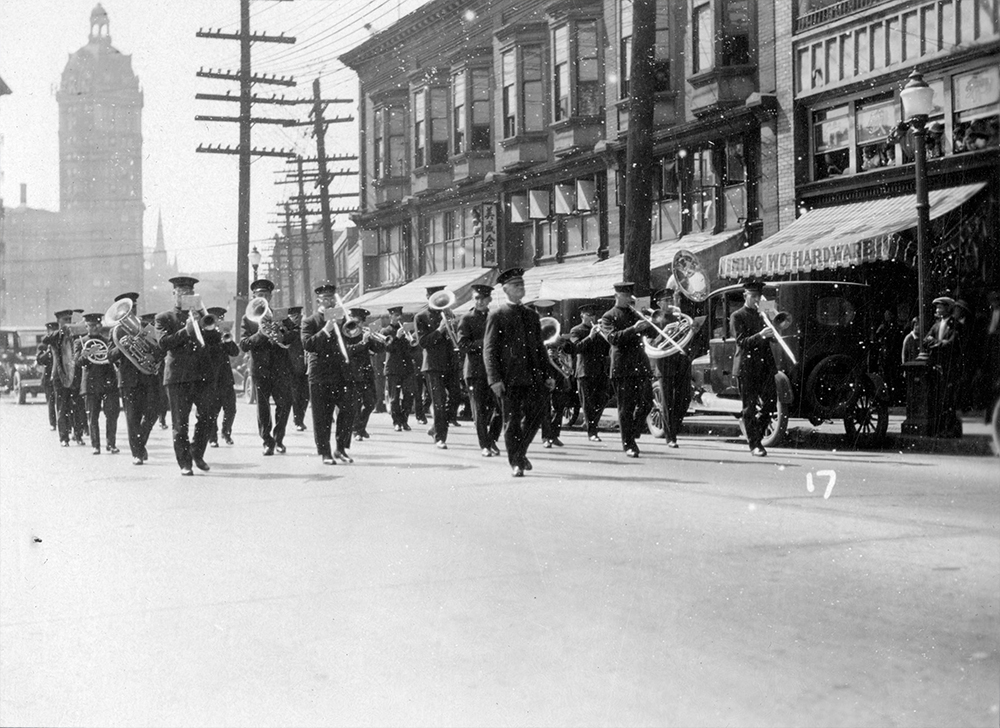
1927: A marching band takes part in the funeral parade of prominent Chinese-Canadian businessman Yip Sang. (Vancouver Archives)
On this spot now…

(On This Spot)
Carnival parade in 1936
1936: All sorts of people have turned out to watch the parade for the Chinese Carnival going down Pender Street. Many of the buildings are the same, and the Sun Tower still stands in the distance.
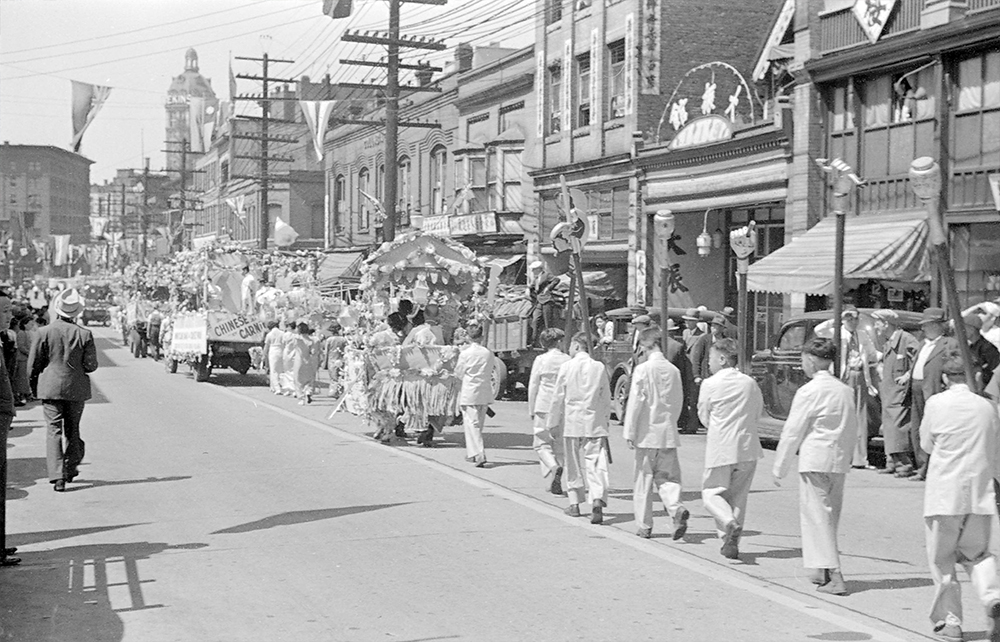
1936: A parade for the Chinese Carnival going down Pender Street. (Vancouver Archives)
On this spot now…

(On This Spot)
Funeral procession in 1937
1937: A crowd has gathered for a funeral procession down Shanghai Alley. This alley, and adjoining Canton Alley, which no longer exists, was the cultural hub of Chinatown in the early years of the 20th Century. Hard economic times in the 1910s and 1920s caused the decline of this area until most of it was finally demolished. A couple dilapidated buildings are the only evidence of the people that called this formerly bustling and exciting place home.
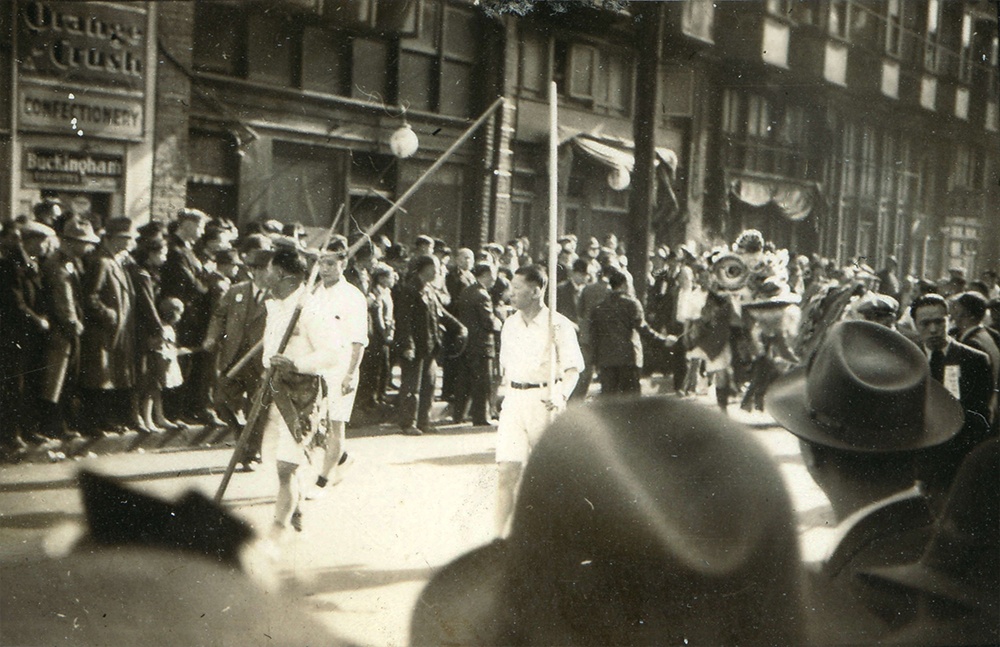
1937: A crowd has gathered for a funeral procession down Shanghai Alley. (Vancouver Archives)
On this spot now…
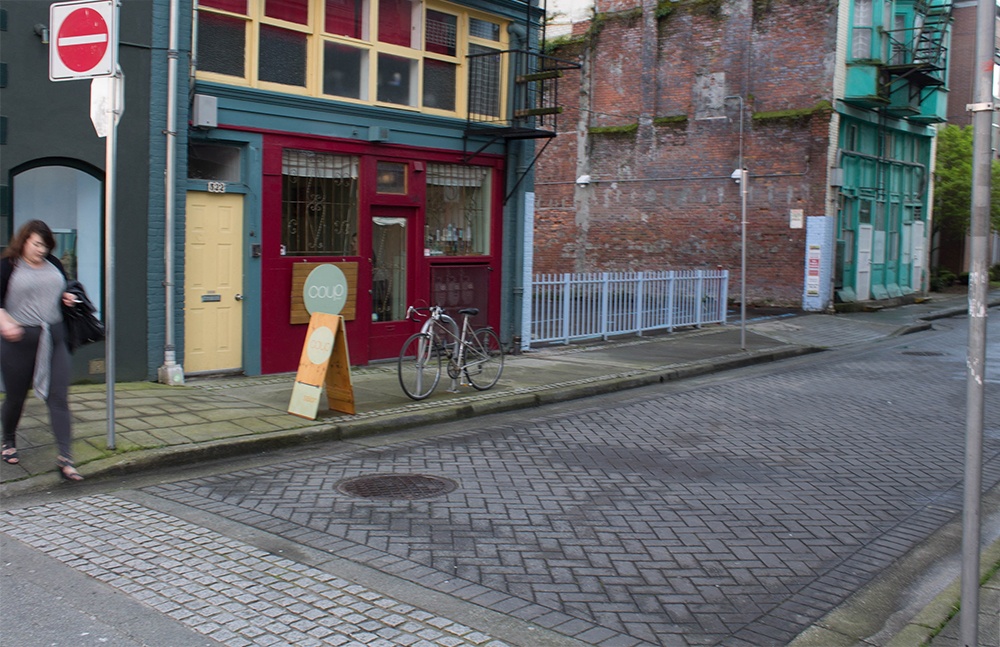
(On This Spot)
Funeral procession in 1939
1939: A crowd of both Chinese and European-Canadians has gathered to watch a funeral procession.
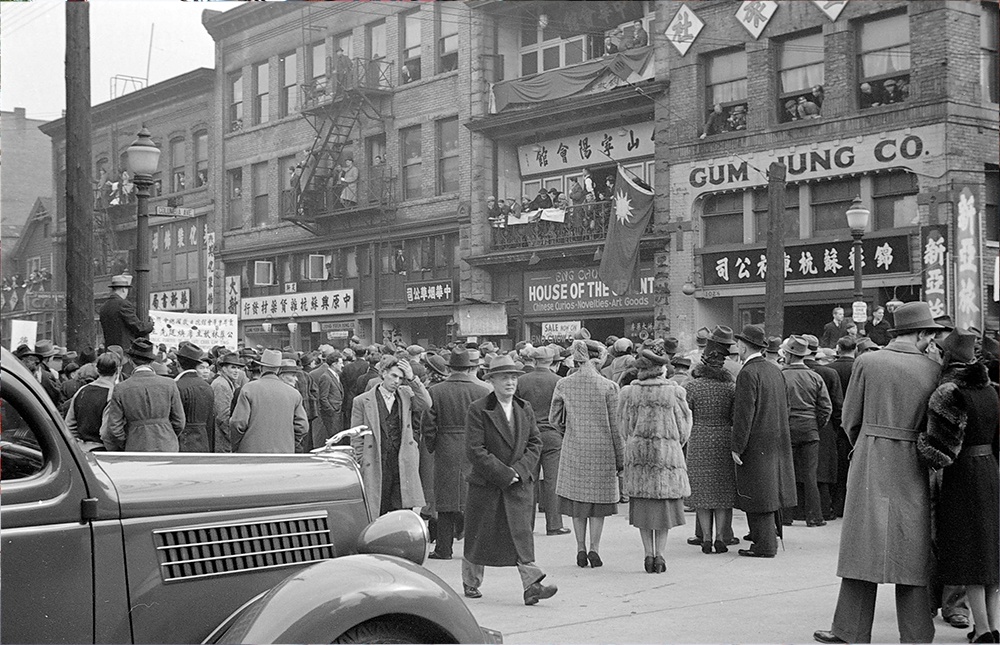
1939: A crowd of both Chinese and European-Canadians has gathered to watch a funeral procession. (Vancouver Archives)
On this spot now…
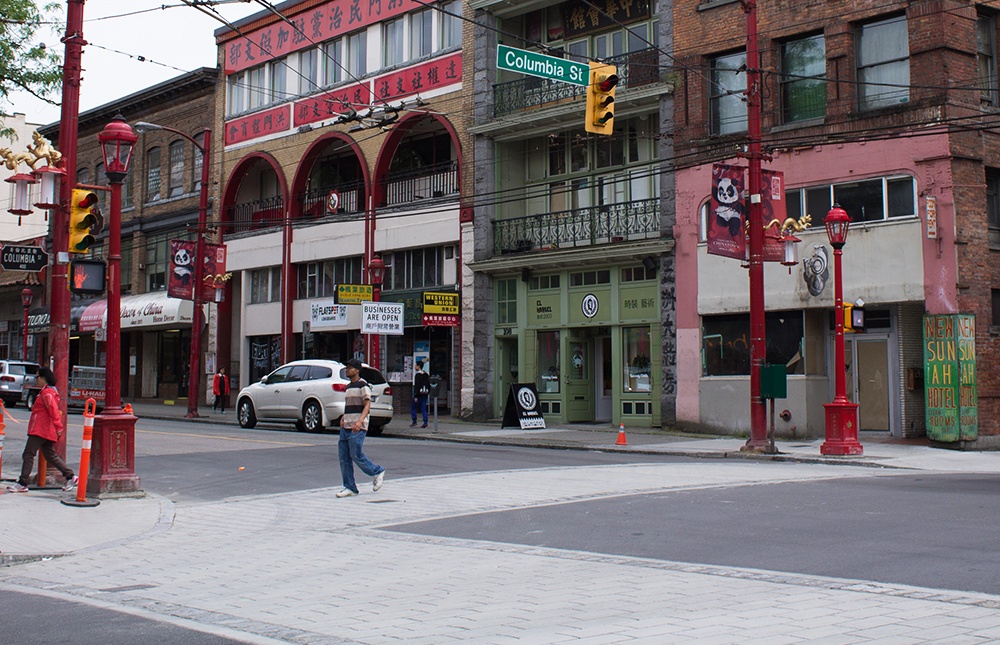
(On This Spot)
The On This Spot app offers you a guided tour of Vancouver’s historic photo spots and allows you to create your own then and now photo mash-ups as you walk around.
The app launched in Vancouver this year, but will expand to other major cities in Canada and the US soon – if you have a talent for writing history tours, On This Spot wants to know.
To download the app for Android or iPhone, for more info or to contact Andrew, check here: onthisspot.ca

